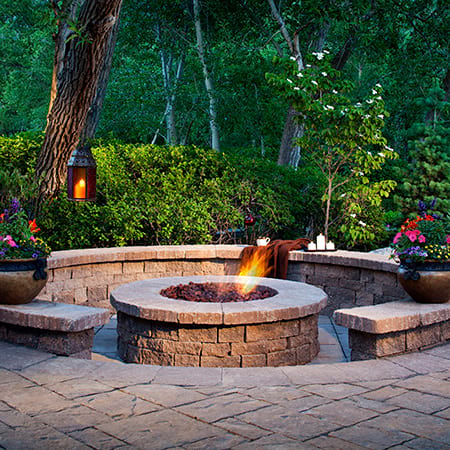5 Common Fire Pit Problems and How To Avoid Them
While fire pits are fairly self-sufficient, requiring very little upkeep to keep them working, it’s important to stay on top of everyday maintenance in for the best long-term usage.
Fire pits do need some special TLC every now and then, but don’t worry – you won’t be scrubbing and sweeping to keep them in top working condition. All they really need is a little extra attention to ensure that they run as smoothly as possible or else fall prey to the common problems that occur with fire pits. Here are the five more common issues that can occur with your fire pit and fire pit glass and what you can do to avoid them.

1. Fire Pit Rust
Whether your fire pit is made using a copper bowl, or is metal and uses electric plugs, there is always a possibility of rust-inducing water damage. Because rust weakens the metal, it can thin out the plating on your fire pit, causing it to crack under the repeated heat of everyday use.
Avoid rust by purchasing a fire pit cover made from waterproof fabric and simply covering your fire pit when it’s not in use. This will keep your pit protected during inclement weather and morning dew.
2. Too Much Ash
If you own an electric pit and use fire pit glass or rocks you won’t need to worry, but traditional wood-burning fire pits do run into this issue. Wood and coal-burning pits will collect ash in the bottom of the pit. While most fire pits have a tray to pull out, making it easier to discard the excess ash, many will require that you clean your pit out manually.
Allowing too much ash to build up will keep oxygen from getting to your flames, making the flames smaller and eventually non-existent. To prevent this from happening, spend a few minutes after each fire pit use to clean out the ash-trap. Wait until the ash has cooled completely in a fire-proof container, and dispose of it properly.
Allowing too much ash to build up will keep oxygen from getting to your flames, making the flames smaller and eventually non-existent.
3. Not Enough Fuel
Electric fire pits filled with fire pit glass or rocks rely on propane or natural gas for fuel. While you can use a propane tank when it has reached lower levels, it will function optimally at a full tank.
Keep an eye on the propane level and don’t forget to refill it to avoid a situation where your tank is empty and unable to fuel a fire. For added safety, keep your tank out of the way of excessive heat and store it only where it belongs – in your fire pit.
4. Damp Fuel
In wood-burning or traditional fire pits, damp wood or damp ash will not light as quickly, which will not only cause problems, but could lead to potentially very dangerous issues.
When your wood isn’t lighting, the temptation is to use more dangerous measures like using kerosene or even alcohol. This is not recommended – using a flammable liquid to light your fire can lead to serious injuries. Instead, keep your fuel stored in a dry place, which will keep your wood or coals ready future use.
